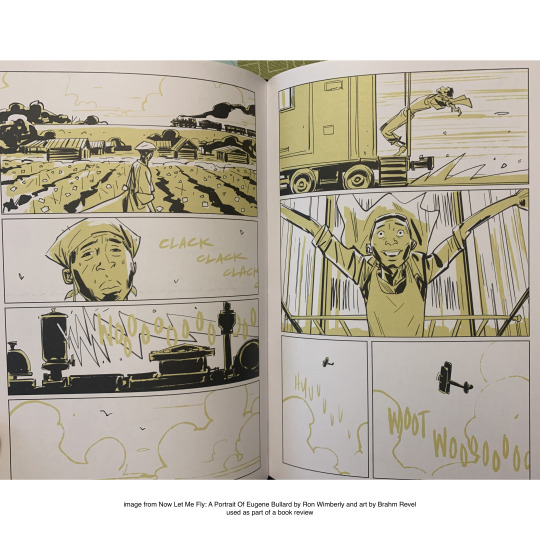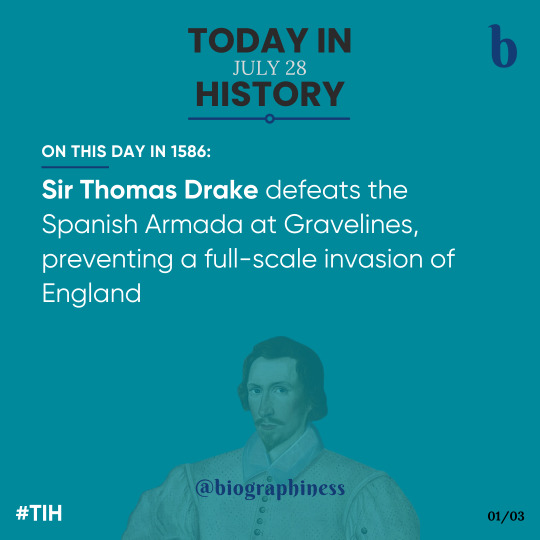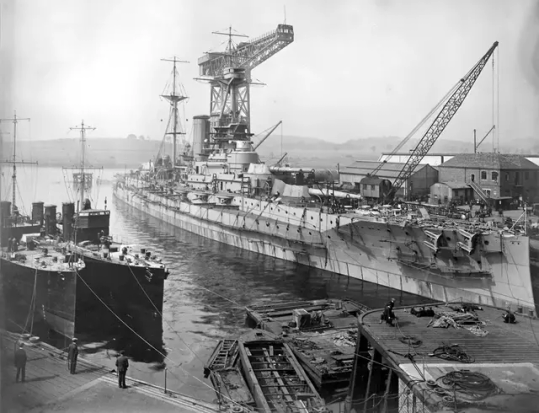#worldwarI
Explore tagged Tumblr posts
Text



On August 4th, the West Pakistan Assembly held its first session 🇵🇰🏛️, the Indian Independence Bill was approved, leading to the creation of Pakistan and India 🇮🇳🕊️, Britain declared war on Germany, marking its entry into World War I 🌐⚔️.
#Biographiness#Biograghines#TodayInHistory#TIH#OnThisDay#OTD#HistoryFacts#August4#PakistanHistory#SubcontinentHistory#WorldHistory#WestPakistanAssembly#IndianIndependence#Partition1947#EndOfBritishRule#WorldWarI#GlobalGeopolitics
2 notes
·
View notes
Text



Now Let Me Fly: A Portrait Of Eugene Bullard by Ron Wimberly and art by Brahm Revel. First Second, 2023. 9781626728523. https://www.powells.com/book/-9781626728523?partnerid=34778&p_bt
This graphic novel is a portrait of an American hero we should all know about.
It opens with an elevator operator, Gene, and a man who works in the building, Mr. Casey, getting stuck in an elevator together. Casey thinks Gene is joking when he says he was the first negro combat aviator -- but Gene shows him the medal he won. Then he starts recounting the long story of how he ended up in France, which includes him running away from his family home in Columbus, Georgia, at age eleven, after his father had to go flee a white mob. (Afterwards, Eugene had terrifying dreams about lynchings that led him to flee to France, where he heard white people and black people live together.)
On the road Eugene spends time with a group of Irish people who've come to the US from England, and it's from them that he first hears the legend of the Ibo, a clan from Africa who refused to be enslaved. They teach him about horses, and feed his hunger for travel, too. It's not long before he stows away on a boat and makes it to the UK where he works at a carnival, takes up boxing, and starts performing on the stage as well. Gene is still quite young when he makes it to Paris just ahead of World War I, which leads him to become a soldier in the trenches and eventually a combat pilot.
Eugene Bullard led an extraordinary life, and if Wimberly and Revel set out to get me interested in it, they succeeded. I've got a list of books from the bibliography to track down, and I'm hoping to find an interview or two with Bullard, too. Worth noting: throughout the book the racism he faced as a young man is shown to be something he and others are still dealing with even in a big city in the North (in what I assume was the 1950s). But the book offers a bit of hope, too.
Revel seems able to accomplish anything as an artist, from scaring me during harrowing battles to making me experience the joy of children playing. He creates a sense of time and place with a few carefully chosen details and brings every character to life with subtle expressions and body language. This graphic novel is worth reading and then rereading for every detail.
8 notes
·
View notes
Text
Voyage of the Gold Star Mothers
By Jonathan Monfiletto

Ida Williams was a Gold Star Mother in Yates County before there was a Gold Star Mothers organization in Yates County. In fact, she went on a pilgrimage with other Gold Star Mothers before there was even a national Gold Star Mothers organization.
A Gold Star Mother is a woman who has suffered the death of a son or daughter during military service in wartime. Certainly, Mrs. Williams – whose only son, Alfred, was killed in action in France’s Belleau Wood during World War I – was not the only Gold Star Mother in Yates County, several others around the county having lost sons during the Great War and many more joining their ranks in ensuing conflicts. And she definitely was not the only Gold Star Mother in America.
But when Mrs. Williams traveled overseas to visit her son’s grave in France and the graves of his fallen comrades and to tour the battlefields of the war in which they gave their lives, she went as a representative of Gold Star Mothers in Yates County. Mrs. Williams took two such trips in her lifetime, first in May 1926 and again in May 1931, both times for about a month.
I previously mentioned Pvt. Alfred Williams in a May 2022 article titled “The boys (and girls) of Benton,” in which I wrote about the World I service members from that Yates County town, as documented in E.D. Harrison’s book “Yates County in the World War, 1917-1918.” Further research reveals more of Pvt. Williams’ story. According to an unidentified newspaper item, Pvt. Williams was working in Michael, Stearn & Co.’s clothing store in Rochester in March 1917 when he enlisted in the Marine Corps. The Great War had started, but America had not yet entered the conflict.
On March 28, 1917, Pvt. Williams went to Buffalo for an examination, and the next month he sent his mother a letter stating he was sending his clothing home because he was leaving for a long business trip. On April 18, his father – also named Alfred, a veteran of the Civil War – received a letter from the Buffalo Recruiting Station stating his son was on his way to Parris Island, South Carolina to train to become a Marine. Pvt. Williams officially entered the Marine Corps at Parris Island on April 24, according to Harrison.
On August 6, Pvt. Williams came home to Penn Yan (his family lived on a section of North Main Street that is in the town of Benton but still within the boundaries of the village of Penn Yan) for a 10-day furlough. On August 13, he returned to Quantico, Virginia, where his unit was stationed. On October 16, his unit – 73rd Company, 6th Regiment, 4th Brigade, 2nd Division – sailed for France from Philadelphia, Pennsylvania.
According to the newspaper item, these were Pvt. Williams’ last words to his family upon his departure from Penn Yan: “Father, it appealed to me so strong that I ought to go that I could not help it; I had to go.”
According to Harrison, Pvt. Williams and his fellow Marines landed at St. Nazaire, France on November 2, 1917. From November 14, 1917 to January 9, 1918, he was in Bordeaux, where he assisted American engineers on American docks and later served military police duty. From January 12 to March 15, he underwent intensive training to prepare to go to the front. In Verdun from March 17 to May 17, he experienced front line trenches for the first time. In Serans from Mary 21 to May 31, he trained behind the lines and then received a call to assist in checking the German drive on Paris.
Pvt. Williams served in Chateau-Thierry from June 3 to July 5, presumably seeing battle for the first time. He was in Soissons as part of the Aisne offensive on July 18, and on July 19 he was instantly killed by a machine gun bullet. While Harrison states Pvt. Williams’ place of death as Soissons, other sources state he was killed at Belleau Wood; both battles were part of the Aisne offensive. According to a letter 1st Lt. George R. Jackson – commanding officer of 73rd Company – wrote to Mrs. Williams, Pvt. Williams was “killed by a German sniper and died instantly, just north of the town of Vierzy when we ‘went over.’ This is near Soissons.”
“He was recommended for gallantry in action and would have been decorated,” Jackson wrote. “Your son was a good soldier and that is about the finest thing that can be said of any American.”
Mrs. Williams made her first voyage to visit her son’s grave in May 1925. She sailed from New York aboard The Republic on May 13 and returned a month later aboard The Leviathan. The Gold Star Mothers’ Association sponsored the three-week-long excursion through France especially for American citizens whose relatives were killed in action and buried overseas. Mrs. Williams and hundreds of her fellow Gold Star Mothers toured the battlefields and cemeteries of the World War in France, including her son’s grave among the 2,000 burials in the national cemetery in Belleau Wood, Aisnes, France. The group was received by Myron Herrick, the U.S. ambassador to France at the time, and Herrick arranged for the Gold Star Mothers to meet French President Gaston Doumergue.
Mrs. Williams traveled to France again in May 1931 – 13 years after her son’s death and a little more than a year after her husband’s death. The Penn Yan Democrat noted she was the sole Yates County resident on the trip that once again included several other Gold Star Mothers. This time, the invitation for the excursion came from the U.S. War Department, Office of the Quartermaster General. On May 13 – exactly six years since she left for her previous voyage – Mrs. Williams and 127 Gold Star Mothers sailed for France aboard The America. Upon their arrival, one item on their itinerary included the Gold Star Mothers’ placing a wreath at the tomb of the unknown soldier at the Arc de Triomphe. They would also travel to Brookwood American Cemetery in London, England, where they would visit the cenotaph that honors all British soldiers.
American Gold Star Mothers – the national organization – was established in 1928, while the Yates County Gold Star Mothers organization was founded in 1948. Mrs. Williams died on August 8, 1950 at age 85. She was survived by three daughters.
#historyblog#history#museum#archives#american history#us history#local history#newyork#pennyan#bentonny#soissons#belleauwood#worldwari#goldstarmothers#france#england
1 note
·
View note
Text
The Great War: A Struggle for Power or a Quest for Balance?"
“The Great War: A Struggle for Power or a Quest for Balance?” The First World War, often referred to as “The Great War,” was a cataclysmic conflict that engulfed nations across continents from 1914 to 1918. At its core, the war has been frequently analysed through the lens of the balance of power—a diplomatic strategy aimed at preventing any one nation or coalition from becoming overwhelmingly…
#WorldWarI BalanceOfPower UPSCPreparation Geopolitics HistoryAnalysis#BalanceOfPower#Geopolitics#HistoryAnalysis#UPSCPreparation#WorldWarI
0 notes
Text
Monday's image: November 11, 2024
David Inshaw, November 11 Sky, Oil on canvas, 190 x 121.9 centimeters, Royal West of England Academy (RWA), Bristol, England
#mc_embed_signup{background:#fff; false;clear:left; font:14px Helvetica,Arial,sans-serif; width: 600px;} /* Add your own Mailchimp form style overrides in your site stylesheet or in this style block. We recommend moving this block and the preceding CSS link to the HEAD of your HTML file. */
Subscribe to Monday's image
* indicates required
Email Address *
First Name
Last Name
(function($) {window.fnames = new Array(); window.ftypes = new Array();fnames[0]='EMAIL';ftypes[0]='email';fnames[1]='FNAME';ftypes[1]='text';fnames[2]='LNAME';ftypes[2]='text';fnames[3]='ADDRESS';ftypes[3]='address';fnames[4]='PHONE';ftypes[4]='phone';}(jQuery));var $mcj = jQuery.noConflict(true);
#superhumanpower#DancingSpirit#DavidInshaw#November11sky#RemembranceDay#WorldWarI#oiloncanvas#RoyalWestofEnglandAcademy#Bristol#England#NYTimes#PrayersforVictims#IsraeliStrike#militarybombedhouse#Jabaliya#Gaza#burial#mourningthedead#community#grief#handsinprayer#UnionsGirdingforBlowbackofHarrisLoss#InPublicSector#WorryofBeingEliminated#SheddingUnionLabel#LatinosShiftRight#A.F.L.-C.I.O.#TrumpIsPulledToward2PathsOnRetribution#RevengeVersusUnity#PickForAttorneyGeneral
0 notes
Text
”We fought the wrong enemy”

George Smith Patton Jr. was a general in the United States Army who commanded the Seventh Army in the Mediterranean Theatre of World War II, and the Third Army in France and Germany after the Allied invasion of Normandy in June 1944.
Born: 11 November 1885, San Gabriel, California, United States
Died: 21 December 1945 (age 60 years), Heidelberg, Germany
Belief in Reincarnation: Patton believed he was a reincarnation of several historical military leaders. He often mentioned that he had fought in ancient battles as a Roman legionnaire, a Napoleonic soldier, and even a Carthaginian warrior. His strong belief in reincarnation influenced his bold decision-making and sense of destiny on the battlefield.
1912 Olympian: Patton competed in the 1912 Stockholm Olympics in the modern pentathlon. This event tested multiple military skills, including shooting, fencing, swimming, horseback riding, and cross-country running. Patton finished fifth overall but controversially missed out on a higher placement due to an issue in the shooting event, where it was believed that one of his bullets passed through an existing hole in the target, not being counted.
Early Tank Advocate: Patton was an early advocate of tank warfare. During World War I, he played a key role in the development of the U.S. Army's Tank Corps. His experience commanding tanks in the later stages of WWI helped shape his strategic ideas, which he would famously use to great effect during WWII.
Sword Designer: Patton designed a cavalry saber, known as the "Patton Saber" (Model 1913 Cavalry Saber), which was adopted by the U.S. Army. His design emphasized thrusting over slashing, reflecting his belief that this was a more effective combat technique.
Fluent in Multiple Languages: Patton was fluent in French and spoke some German. His linguistic skills were part of his lifelong study of military history and strategy, which included reading works in their original languages. His fluency in French allowed him to converse directly with French military leaders during WWII.
#GeorgePatton#WWIIHistory#ReincarnationBelief#ModernPentathlon#OlympicAthlete#TankWarfare#MilitaryHistory#PattonSaber#SwordDesign#USArmy#WorldWarI#Leadership#FluentInLanguages#Cavalry#FrenchLanguage#TacticalGenius#HistoricalFigures#TankCommander#MilitaryInnovation#WarHero#quoteoftheday#today on tumblr
0 notes
Text
youtube
800 సంవత్సరాల పురాతన ఆలయంలో, కారు, విమానం మరియు బైక్ ను చెక్కారా?
Hey guys, ఈ రోజు మనం ఇండోనేషియాలోని బాలిలో, చాలా విచిత్రమైన ఒక పురాతన ఆలయానికి వెళ్తున్నాము. మీరు చూడగలిగినట్లుగా, ఇదే ఈ ఆలయం పేరు, దీన్ని నిర్మించిన సంవత్సరాన్ని, ఇక్కడ మీరు చూడవచ్చు. ఈ ఆలయాన్ని, 1205 లో నిర్మించారు, అంటే ఇది నిర్మించి సుమారు 800 సంవత్సరాల క్రితం అవుతుంది. కానీ, దీని వెనుక ఉన్న గోడపై, ఈ వింత చెక్కడాన్ని మీరు చూడవచ్చు. ఇది ఏంటని, మీరు నాకు చెప్పగలరా? అవును, ఇది ఒక car, దీనికి modern-day car లాగ నాలుగు చక్రాలు ఉన్నారు. ఇక్కడ మీరు ఈ మొత్తం కారును చూడవచ్చు; దీనిపై ఒక doorను కూడా చెక్కారు చూడండి. ఈ వ్యక్తి drive చేస్తున్నాడు, అతను steering wheelపై ఒక చేతిని ఉంచి, మరోవైపు, అతను horn కొడుతున్నాడు చూడండి, అతను ఈ బల్బు లాంటి horn నొక్కి దాని ద్వారా sound చేస్తున్నాడు, ఈ రకమైన hornలను Bugle air horns అని అంటారు, మీరు వాటిని నొక్కినప్పుడు, అది sound చేస్తుంది. ఈ car frontలో పెద్ద లైట్ ఉంది చూడండి, ముందు భాగంలో ఒక పెద్ద కాంతి మూలం అమర్చబడి ఉంది. 800 ఏళ్ల క్రితం కట్టిన గుడిలో, carను ఎలా చెక్కాలి? 800 సంవత్సరాల క్రితం కార్లు ఉండేవా? అయితే అంతకన్నా crazy ఇంకేదో ఉంది, ఈ వ్యక్తి ఏమి పట్టుకుంటున్నాడో చెప్పగలరా? అది gun ఆహ్? అవును, అది ఒక pistol.
ఆ వ్యక్తి gunను పట్టుకుని ఇక్కడ car driverని shoot చేయబోతున్నాడు. ఏం జరుగుతోంది? ఈ వ్యక్తి చాలా లావుగా ఉన్నాడు. మీరు అతని పెద్ద బూట్లు దిగువన చూడవచ్చు. కానీ ఈ మొత్తం దృశ్యం చాలా అధివాస్తవికంగా కనిపిస్తుంది, ఎందుకంటే మీరు దాని పక్కన చెక్కబడినది కూడా చూడవచ్చు. ఇక్కడ ఒక పురాతన సైనికుడు, గుర్రంపై కూర్చున్నాడు. ఒక చేతిలో విల్లును పట్టుకుని అందులోంచి బాణం వదులుతున్నాడు. అక్కడ, అతని ముందు ఒక వ్యక్తి ,మోకరిల్లి ప్రాణాల కోసం వేడుకుంటున్నాడు. ఇండోనేషియాలోని 800 ఏళ్ల నాటి హిందూ దేవాలయాలకు ఇది విలక్షణమైనది. So, మనం ఎడమవైపున, పురాతన బాణం మరియు కుడి వైపున modern gunని చూడవచ్చు. చాలా శతాబ్దాల క్రితం నాటి దృశ్యాన్ని, చాలా ఆధునికమైన దృశ్యంతో పాటు మనం ఎలా చూస్తాము? కానీ, బహుశా, ఇది gun కాకపోవచ్చు, మరేదైనా కావచ్చు, కదా? ఎందుకంటే, ఇక్కడ చెక్కిన శిల్పాలు, చాలా పాతవి మరియు చెడిపోయినందున, బహుశా మనం పొరపాటు చేస్తున్నాము. And ఇది కారు కాకపోతే, ఒకవేళ గుర్రం లేని ఒక రథం లేదా గుర్రపు బండి అయితే? మనం తప్పు చేసే అవకాశం ఉందా? లేదు, సమీపంలో ఉన్న ఈ చెక్కడాన్ని చూడండి. ఇక్కడ మరొక కారు ఉంది, ఖచ్చితంగా ఇది car ఎహ్.
Praveen Mohan Telugu
#PraveenMohanTelugu#indonesia#bali#PuraDalem#bicycle#Car#Airplane#WorldWarI#indonesiantemple#Hinduism#Ancienttemple#Advancedtechnology#ancienthistory#tumblr feed#today video#మననిజమైనచరిత్ర#ప్రవీణ్_మోహన్#youtube#tumbleweed#Youtube
0 notes
Text
One of the first cryptologists was an Arab - did you know? One of the greatest Arab scholars, al-Kindi (الْكِنْدِي), was one of the pioneers of cryptology. How did he manage to decrypt messages? https://arabic-for-nerds.com/history/cryptologist-arab/?feed_id=5637&utm_source=Tumblr&utm_medium=geralddrissner&utm_campaign=FS%20Poster
0 notes
Text
youtube
As we move into the 18th and 19th centuries, we'll examine the rise of Prussia, the Napoleonic Wars, and the unification of Germany under Otto von Bismarck in 1871. We'll delve into the rapid industrialization and modernization of the German Empire, as well as its colonial ambitions and rivalries with other European powers. The video will then cover Germany's fateful role in World War I, the collapse of the empire, and the turbulent years of the Weimar Republic. We'll explore the rise of Adolf Hitler and the Nazi Party, the horrors of World War II and the Holocaust, and Germany's ultimate defeat and division.
#GermanHistory#HistoryofGermany#HolyRomanEmpire#ProtestantReformation#ThirtyYearsWar#PrussianEmpire#GermanUnification#OttovonBismarck#GermanEmpire#WorldWarI#WeimarRepublic#AdolfHitler#NaziGermany#WorldWarII#Holocaust#ColdWarGermany#EastGermany#WestGermany#BerlinWall#GermanReunification#EuropeanUnion#GermanLeadership#ModernGermany#EuropeanHistory#HistoryDocumentary#Youtube
0 notes
Text
Armistice Day 1918: A Pivotal Moment in History
In the annals of history, certain dates echo through time, symbolizing moments that altered the course of nations and shaped the destiny of the world. One such date etched in the collective memory of humanity is November 11, 1918 — Armistice Day. This historic day signaled the cessation of hostilities on the Western Front, bringing an end to the cataclysmic conflict that was World War…

View On WordPress
1 note
·
View note
Text



On July 28, history witnessed Sir Thomas Drake's triumph over the Spanish Armada, the onset of World War, and the first successful Space Shuttle test flight.🌍⚔️🚀
#Biographiness#Biograghines#TodayInHistory#TIH#OnThisDay#OTD#HistoryFacts#July28#SpanishArmada#SirThomasDrake#WorldWarI#AustriaHungary#Serbia#SpaceShuttle#SpaceExploration
2 notes
·
View notes
Text
Battle of Jutland Ships
#BattleofJutland #warships #warpedia
Battle of Jutland – Warpedia The Battle of Jutland, fought between the British Royal Navy’s Grand Fleet and the Imperial German Navy’s High Seas Fleet during World War I, remains one of the most significant naval engagements in history. This epic confrontation, which took place from May 31 to June 1, 1916, off the coast of Denmark’s Jutland Peninsula, involved hundreds of warships and thousands…

View On WordPress
#battle of jutland ships#HMS Dreadnought#HMS LION#HMS Queen Mary#navy#warpedia#world war 1#worldwarI#ww1#WWi
1 note
·
View note
Text
A father to the fatherless: Ray Travis reprised
By Jonathan Monfiletto


(An article similar to this one appeared on this Oliver's Travels blog in October 2022. However, at that time, I had only browsed the Yates County History Center's subject file on Ray Travis - containing newspaper articles and other documents - in order to write that article. Because of a recent research inquiry, I felt the impetus to browse our Ray Travis archival collection - containing his personal papers and letters - and write another article about this amazing man and his life and work).
Ray Travis never married nor had children, but it is said more than a million descendants can credit their existence to him. Not his direct descendants, of course, but instead the descendants of the more than a thousand Armenian children he – termed as “The humanitarian of Himrod” in a June 2016 article in The Chronicle-Express – helped protect and defend in Turkey in the aftermath of World War I.
The humanitarian of Himrod, however, was not a native of Yates County. Ray Paris Travis was born August 9, 1889 in Ionia, Michigan to Silas and Cynthia Lyford Travis, who had moved to Michigan from Yates County. When Travis was 3 years old, the family moved back to Himrod, where Travis and his two brothers, Jay and Claude, and his sister, Fanny, grew up on their father’s farm on Chubb Hollow Road. After graduating from Penn Yan Academy, Keuka Institute, and the Penn Yan Teachers Training Class, Travis began teaching in a rural schoolhouse in Himrod in September 1907 and taught school until June 1917.
At that point, although he was nearly 28 years old and well above the required age of conscription, Travis felt the call to serve his country and enlisted in the U.S. Army during World War I. He served in the quartermaster corps with Company D, 502nd Engineers at Engineers Camp, Base Hospital No. 8 in France. Serving from September 1917 until July 1919, Travis reached the rank of sergeant.
Following the war, Travis sought his discharge so he could support relief efforts in Europe and the Middle East through the YMCA and the U.S. Food Administration Grain Corporation. By November 1919, he became the director of an orphanage run by Near East Relief in Aintab, Turkey (now known as Gaziantep, the capital of Gaziantep Province and the most populous city in Turkey’s Southeastern Anatolia Region), using his experience as a teacher.
During World War I, the Ottoman Empire – which, until the end of the war, controlled Turkey as well as parts of Eastern Europe, North Africa, and the Middle East – had deported its minority Armenian population and committed a genocide against this group of people. After the war, as Travis took the helm of the orphanage, Armenians began returning to their native land, including orphaned children who had survived the genocide. Travis’ task as headmaster was to take care of these children and provide for their needs.
That task proved difficult. In early 1920, Turkish nationalist forces attacked Cilicia – then an autonomous Armenian republic occupied by the French military – and laid siege to several cities. In the YCHC collection are typewritten extracts from the diary of a YMCA Secretary Crathern detailing the siege of Marash from January 20 to February 14, 1920 and a diary – both typewritten and handwritten – from Travis covering the siege of Aintab from April 1 to May 30, 1920. Indeed, heavy fighting between Turkish nationalists and local Armenians, who organized their own self-defense forces when French troops left the city, broke out on April 1 and lasted until June with a brief ceasefire in between.
“This will give you an idea of what happened in Marash last winter when from 8,000 to 10,000 Armenians were massacred. And all this when French soldiers were supposed to be there for their protection! My diary of the Aintab trouble I will send soon,” Travis wrote to an unknown addressee on September 7, 1920 at the end of one copy of Crathern’s diary.
During the fighting, Travis used his military knowledge to barricade and fortify the orphanage and used his position to secure rifles, ammunition, and grenades from a French army base to defend the orphanage. He welcomed all Armenians who sought refuge inside the orphanage’s compound, and he moved children from another orphanage, located in the city’s Turkish neighborhood, to an American hospital in the Armenian neighborhood.
When the French military left Aintab on June 2, Travis and approximately 800 orphans of Near East Relief followed them on a journey that eventually led them to Beirut, Syria (whose territory then included Lebanon). Traveling by foot, truck, and train and staying in tents, a cave, and a ruined building, Travis, the teachers, and the children established a new Near East Relief orphanage in Jubeil, north of Beirut.
One of the children who came under Travis’ care in Aintab and trekked with him to Beirut was Karnig Panian, who captured his story as an Armenian orphan in his memoir, “Goodbye, Antoura.” Parnian recalled Travis as both a fierce protector and kind provider of the children.
“He had a bright smile, blond hair, and penetrating eyes, and when he walked, it was as if the earth shook beneath his feet. But this giant of a man had a soft, gentle soul. He would chat with us, crack jokes, and take part in our games. He loved us with all his heart, and he soon gained our confidence and friendship, becoming a surrogate father to all,” Parnian wrote. “During the day, he was almost always with us. At night, he looked into our bedrooms, covering the boys who had kicked off their blankets in their sleep. He often appeared in our classrooms, and he made sure we were clean and well groomed. He even tasted all of the food before it was served to us, ensuring that it was up to his standards.”
Once secure in Jubeil, Travis worked with the American University of Beirut to help the children under his care obtain a college education. He left his work with Near East Relief in the spring of 1925 – apparently amid the closure of the orphanage in Jubeil – and returned to America. He apparently tried to secure a teaching position, according to his papers, but instead found a position as an inspector with the Immigration and Naturalization Service, then under the U.S. Department of Labor and later the Department of Justice.
Stationed in Texas and Arizona in the start of his career, Travis sought a transfer to Niagara Falls to be closer to his family in Himrod – particularly his elderly parents – and later worked in Buffalo and Syracuse as well. He seemed to bring his stern but kind, serious yet caring, approach from his relief work to his immigration career. His papers include notes of appreciation for his efforts to help immigrants obtain their American citizenship and begin a new life.
On a special assignment, Travis was sent to the Grove Park Inn in Asheville, North Carolina, when German, Italian, and Japanese diplomats in America were detained during World War II. He subsequently received a thank you letter from the group of diplomats who stayed there. “During this period, your tireless efforts to alleviate our anxieties has touched us all profoundly. In spite of your official capacity, which held you within certain limits, we all felt that we had your wholehearted support, and your extreme kindness permitted us to approach you as a friend,” reads the letter, dated June 10, 1942.
During his immigration career, Travis visited his family in Himrod on the weekends, helping out with groceries during the Great Depression and once bringing new bicycles for the children for Christmas. After his retirement in 1954, Ray moved back to Himrod to care for his sister, who was widowed and blind. Ray died on September 21, 1965 at age 76 and is buried with his parents, siblings, and their families in Lakeview Cemetery in Penn Yan.
A Hometown Hero banner, installed by Johnston-Costello American Legion Post 355, honoring Travis and his World War I service recently went up on East Main Street in Penn Yan. While recognizing Travis’ military service, perhaps it also pays tribute to his service to the Armenian children, new immigrants to America, and many other people he encountered.
In the article in The Chronicle-Express, John Christensen conveyed Travis’ legacy this way: “Never having married and never having children, Ray Travis might have easily slipped away unremembered as those who know him pass on. But that is not true. … Ray Travis did have children, thousands of them, and all of them boys. And those children’s children owe their very lives to his life and the devotion he showed all those orphaned boys nearly a century ago.”


#historyblog#history#museum#archives#american history#us history#local history#newyork#yatescounty#pennyan#himrodny#raytravis#worldwari#ottomanempire#turkey#armenia#syria#lebanon#orphan#genocide
1 note
·
View note
Text
Vimy Ridge: UNESCO World Heritage Site #Belgium #France #UNESCO #WorldHeritageSite #WorldWarI
0 notes
Text
Vimy Ridge: UNESCO World Heritage Site #Belgium #France #UNESCO #WorldHeritageSite #WorldWarI
0 notes
Text
"Happiness in intelligent people is the rarest thing I know."

Ernest Miller Hemingway was an American novelist, short-story writer and journalist. Best known for an economical, understated style that significantly influenced later 20th-century writers, he is often romanticized for his adventurous lifestyle and outspoken and blunt public image.
Born: 21 July 1899, Oak Park, Illinois, United States
Died: 2 July 1961 (age 61 years), Ketchum, Idaho, United States
War Veteran: Hemingway served as an ambulance driver in Italy during World War I. He was wounded in action, an experience that deeply influenced his writing, particularly his novel "A Farewell to Arms," which is partly based on his wartime experiences.
Literary Icon: Hemingway is considered one of the most influential writers of the 20th century. His minimalist writing style, characterized by short, declarative sentences and understated emotion, revolutionized modern literature. He won the Nobel Prize in Literature in 1954 for his "masterpieces" which "shimmer with a unique style."
Adventure and Travel: Hemingway was known for his adventurous spirit and love of travel. He often sought out dangerous or exotic locales for his writing and personal pursuits, such as bullfighting in Spain, big-game hunting in Africa, and fishing in Cuba. His experiences in these settings often found their way into his stories and novels.
The Old Man and the Sea: One of Hemingway's most famous works is the novella "The Old Man and the Sea," published in 1952. It tells the story of an ageing Cuban fisherman, Santiago, who engages in an epic struggle with a giant marlin far out at sea. The novella won the Pulitzer Prize for Fiction in 1953 and contributed to Hemingway receiving the Nobel Prize.
Personal Life and Demise: Hemingway led a tumultuous personal life marked by marriages, divorces, and struggles with mental health. He was married four times and had three sons. Sadly, Hemingway also battled depression and alcoholism throughout his life. He tragically took his own life in 1961 at the age of 61, leaving behind a legacy of literary brilliance and enduring influence.
#ErnestHemingway#Author#Literature#NobelPrize#WritingStyle#Adventure#Travel#TheOldManAndTheSea#WarVeteran#WorldWarI#Bullfighting#BigGameHunting#Cuba#Depression#Alcoholism#Legacy#PulitzerPrize#ModernLiterature#Influence#Biography#quoteoftheday
0 notes